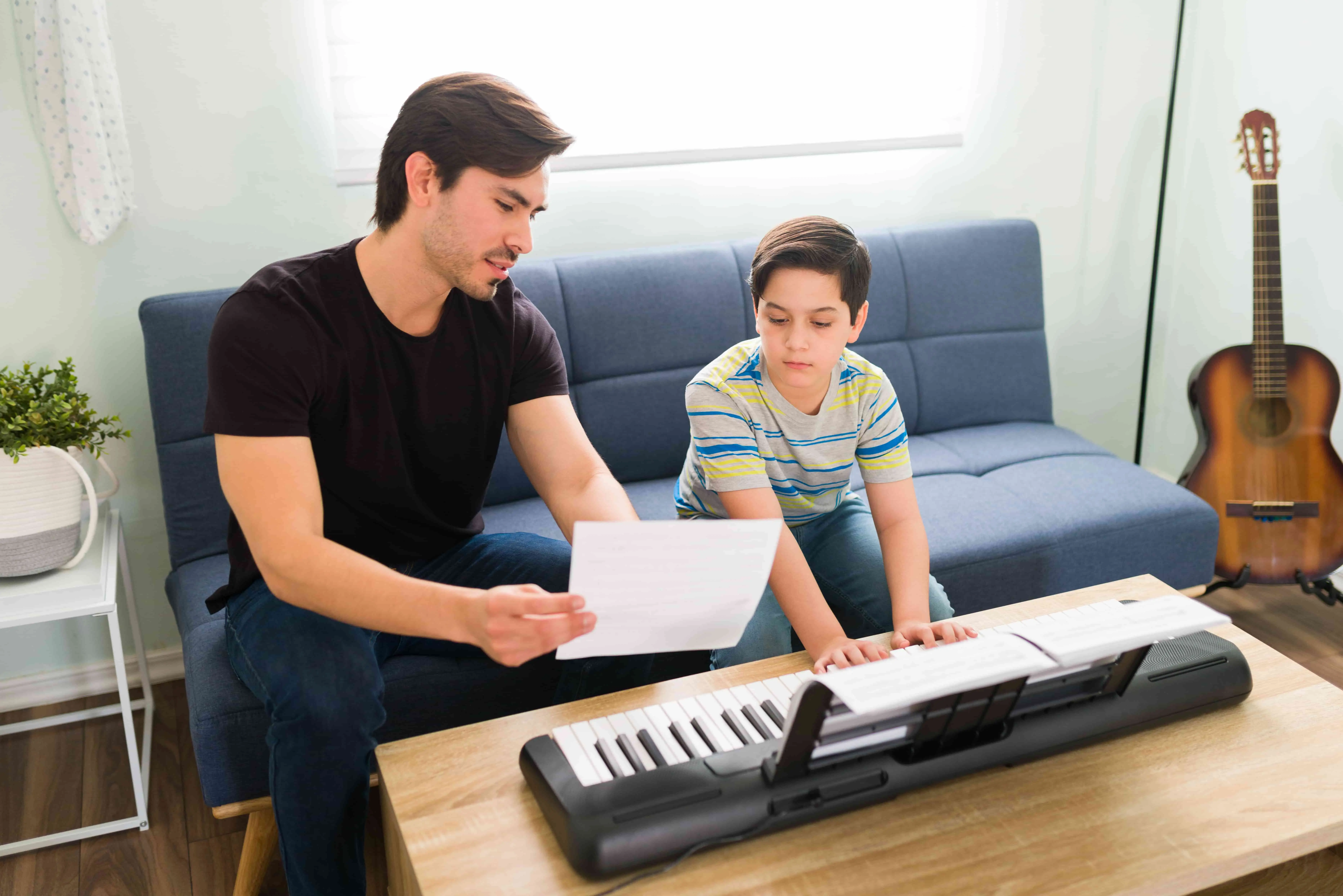One of the world’s most important and iconic musical instruments is the piano. An elegant instrument, it serves as the first instrument for many aspiring children who wish to be musicians in the digital age. Online piano classes make it easier to seize this opportunity. The first step to learning how to play the keyboard is learning about rhythm and timing, something that children may find difficult to grasp but no worries! There are many unique and fun ways to overcome hurdles along the way and we, at Artium Academy, are ready to guide you through it all.
Understanding Basic Musical Concepts
To learn how to play the keyboard, you must first understand the basics. Before we step into what rhythm and timing are, let us explain some basic musical concepts:
- Beat: A beat is a steady pulse that is always present and something that you can feel, like how your heart thumps and is something that drives you and encourages you.
- Tempo: The tempo sets the speed of the music, whether it is fast or slow-paced, like how a party has faster-paced songs and how a quiet evening could have slower-paced songs playing.
- Melody: It is a series of notes played in a sequence, creating a recognisable musical line. It is the ‘tune’ of the song, the part that you often hum or sing along to.
A rhythm is how music is organised in time, where long and short sounds are combined. To master rhythm, you can look online for information related to keyboard rhythm training for children.
Techniques to Teach Rhythm
- Clapping and Counting: To begin understanding rhythm, it’s best to start with clapping and counting. Play your child’s favourite song and have them clap along to the beat. This allows them to start grasping the rhythm and understanding the beats. Along with clapping, have them count in a ‘1-2-3-4’ format to learn timing.
- Use of Metronome: A metronome is a tool that allows musicians to create a steady beat so they can stay within the rhythm of the song. Having a tool like this will allow your child to steadily learn how to stay on beat. Turn it into a game with your child, trying to stay on beat with the different speeds that a metronome offers.
- Rhythm Games: Play games that use the idea of rhythm with your child, like ‘Follow The Leader’ where you have to mimic the rhythm of the leader. Such games can improve their understanding of rhythm and increase their handling of it.
- Learning from Songs: Play your child’s favourite song, and have them clap along to the tune of it. This is a great way to get them engaged and excited to learn.
Also Read – Piano Technique for Beginners
Integrating Rhythm in Keyboard Practice
To have better keyboard timing exercises for children, you can start with some basic rhythm exercises and slowly build their skills. By following these exercises, your child’s understanding of rhythm and timing will grow and improve gradually.
To start, a slow, steady and consistent practice is necessary. Having your child gradually get used to the tempo and rhythm of different but slower songs is a great way to ease them into playing the keyboard. Once they get used to it, you can start increasing the speed and tempo to test their skills. Counting the beats out loud is a great way to improve the child’s hold on rhythm. Taking simple melodies and having the child count the beats will improve their timing. Online piano lessons make it easier and more convenient to learn beats.
Another keyboard rhythm exercise for children is taking advantage of pre-recorded tracks or simple drum patterns. These will allow your child to follow along to these songs and understand their patterns and rhythms. It will also allow them to understand other types of music along with the keyboard. While learning how to play the keyboard, taking certain sections of songs and practising them is a great way to improve your child’s skills. Practising their favourite songs, divided into sections can help their understanding immensely.
These are some of the simpler keyboard timing exercises for children that can help young music enthusiasts improve their skills and abilities while increasing their love for music.
Advanced Rhythm Exercises
Eventually, your child will master the basics of rhythm and timing on the piano. Whether they do it on their own or through online piano lessons at music academies such as Artium Academy, they begin to take on advanced techniques to keep on their journey. Taking on advanced techniques can be challenging yet rewarding and fun.
Classes will soon lead into the aspect of ‘syncopation’. This is a variety of rhythms which are played together to make a piece of music, having both on and off-beats that change the feeling of the song. With certain keyboard timing exercises for children, your child can learn to play some of their favourite tunes and change up the timing of the beats on their own. This will allow them to experiment and expand their knowledge.
For some older and more experienced children, your little musician can start learning more about ‘polyrhythms’. Polyrhythms consist of two or more rhythms being played together, each rhythm having its own beat and tempo. This allows for a unique kind of layering of the rhythms, which brings more depth to the music. To practice polyrhythms, your child can use their hands to tap a different rhythm on each one, creating layers to the rhythms.
Finally, they can then try to make their rhythmic variations. Taking your favourite melodies and making your versions of them is a major part of learning how to play the keyboard.
Tracking Progress
To truly build your child’s skills and interest in the keyboard, you should support them as much as possible, providing them with advice, opinions and positive feedback as and when required. This will all result in an accelerated reaction to their growth while learning how to play the keyboard. A great way to highlight keyboard timing exercises for children is to conduct recording sessions. This will allow you to regularly check in on your child’s progress and rhythm accuracy.
A metronome is also a great way to regularly practise staying on beat. Staying on track with the beats and their clicks will allow your child to improve their timings and help them stay consistent. Using a metronome is a major aspect of keyboard rhythm training for children. Another way to maintain progress is by using a visual tracker. Having such a tracker will make it easier to follow and motivate your child to perform better than the last time. Finally, a much-needed aspect is positive reinforcement. Children will respond better to compliments as they will finally feel as though their practice is making a difference. It will also motivate them to do better and stay consistent.
Conclusion
Keyboard rhythm exercises for children allow them to improve their skills and understanding of the intricacies of the keyboard. With the help of these various fun and interactive ways to learn, your children will be able to enhance their skills with the keyboard. With consistent practice and patience, you and your child will be able to see the improvements that will come around, and the child’s rhythmic understanding will grow. If you wish your child to play the keyboard properly, enrolling them at our academy will improve their understanding and skills much faster. The steady improvement will be visible to you and your child.
To help your child learn, why not join Artium Academy where we can allow your child’s skills to blossom fully? Our Online Music Classes will help your child to embrace their musical side fully.
To begin your child’s keyboard classes,
















